The Zapotecs and their art of Weaving
The rugs and cushion covers we present at HARPO are original creations of different Zapotec weavers families. Discover our new products and follow our adventures.
The Zapotecs are an indigenous population of southern Mexico. They are mainly concentrated in the state of Oaxaca, where the small village called Teotitlán del Valle is home to the largest and most talented population of Zapotec weavers.
Weaving as a family tradition
The Zapotecs form an ancestral community, with an extremely rich culture and know-how. Since 500 BC, the art of weaving has been one of their traditional activities and this craft increased with the arrival of the Spanish conquistadors at the end of the 16th century. In Teotitlan del Valle, the members of the different families inhabiting the village are made of generations of weavers. Men and women work together to create the beautiful Mexican rugs that we have all seen at least once in interior designs magazines. Often imitated but never equaled, the know-how of Mexican weaving is passed on between artisans and children are early accustomed to working with wool. For them, it is a cultural transfer but also a great production force and an immense commercial asset.
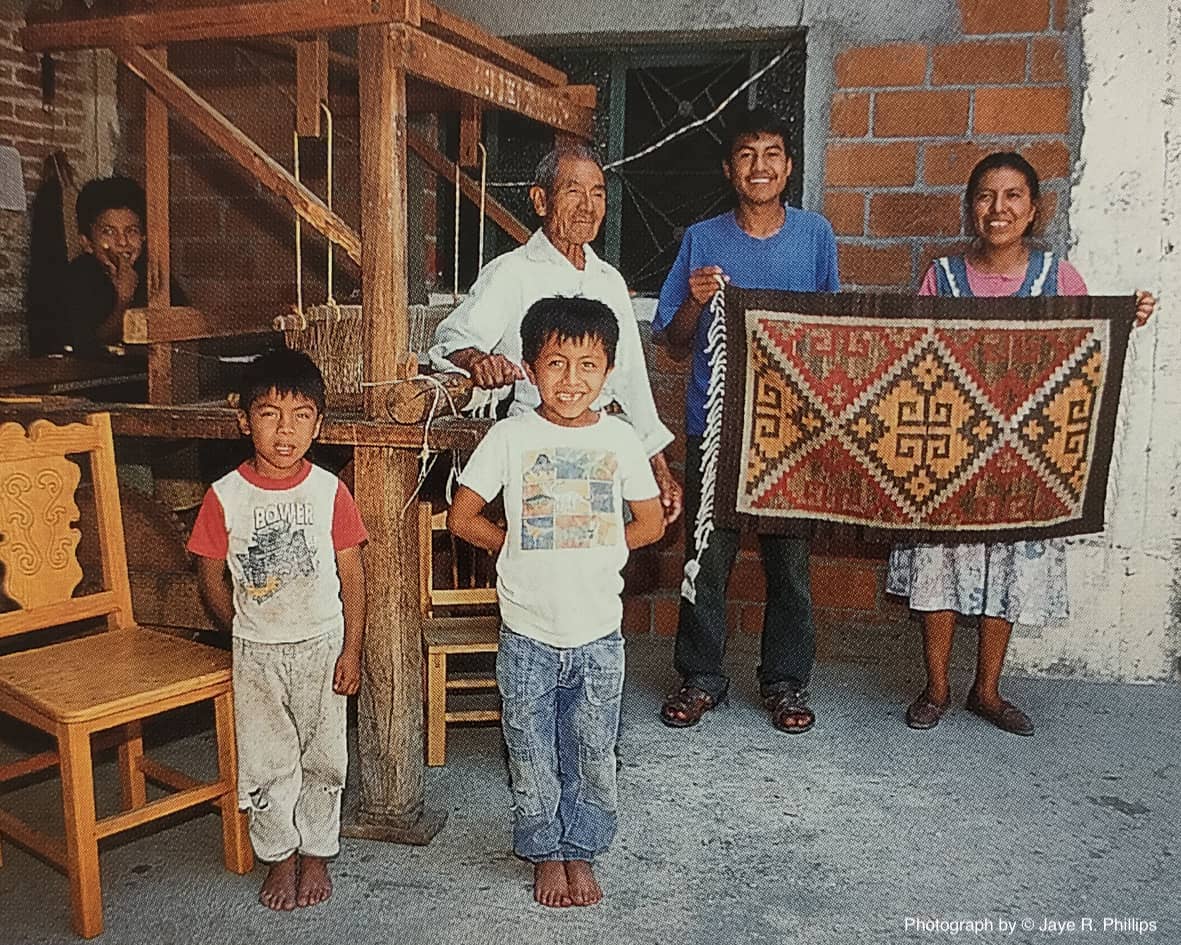
Zapotec wool rugs: a traditional know-how
When you buy a Mexican Zapotec rug, you must realize how meticulous and fastidious the work done on this ethnic rug is.
First, the wool
The artisans work the wool in its raw state: it is hand washed and then air-dried on stretched threads. The Zapotec craftswomen pass a multitude of piles of wool between two large combs made with rectangular wooden boards pricked with multiple fine metal points. This process is learned by the Zapotec girls from a very young age, and it is one of the first essential phases in the processing of the wool, which is then relaxed and ready to be spun into balls of natural wool.
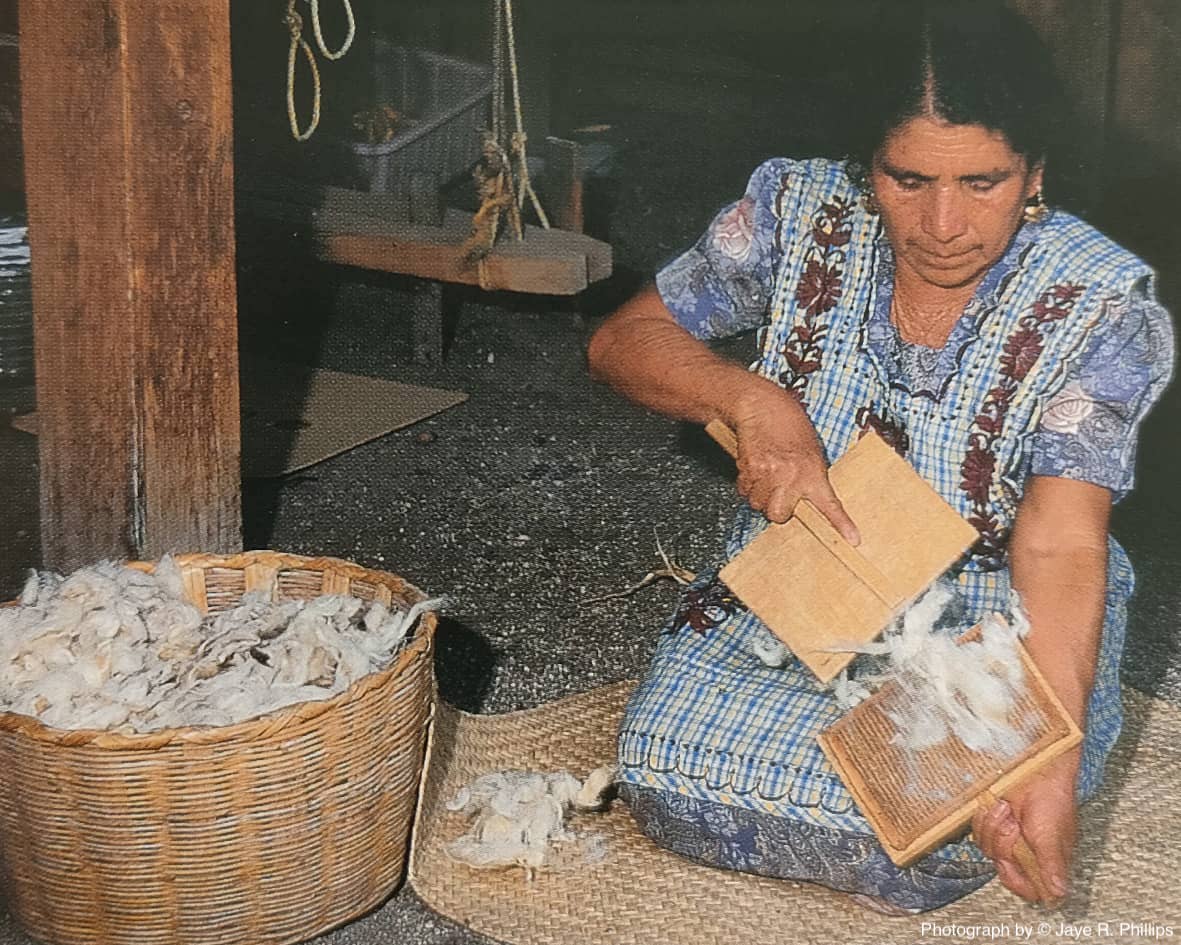
From the natural dyes…
Zapotec weavings being known for their superb range of colors, so when the wool is not left in its fleece tones (white, beige, grey, black, depending of the sheeps), it goes through a dyeing process. Traditionally, dyeing is done with natural elements (pomegranate skin, moss on rocks, bougainvillea buds), resulting in varied and subtle hues. One of the emblematic natural colors of Zapotec weaving is a beautiful burgundy red, created from the crushed larvae of the cochineal (a parasite present in the Nopal cactus, known for their large round palms).
Depending on the shade the artisans want to achieve, the dye baths made from natural elements can take days or weeks. This know-how is a real chemical process, it is long, meticulous and precious. It is carried out by several people, often in couple, for more efficiency in the task.
…to the synthetic pigments
In the 1850s, the first synthetic dyes arrived on the Mexican market. The Zapotec weavers, in a pragmatic way, adopted some of them but also discarded others. In that way they remained faithful to their know-how while adapting to the new products on the market that could help their process. Therefore today Zapotec weavers have the choice to work with natural pigments or aniline, or both.
Once the wool is pigmented, it is again air-dried, to be spun into balls that will be used to make rugs and other Mexican weavings, emblematic of the Zapotecs of Teotitlan del Valle.
The patterns featuring on Zapotec rugs
The artisans of Oaxaca use large treadle looms that were introduced by the Spanish conquistadors. Thanks to the maintenance of their traditional skills, they still compose the incredible patterns present on their rugs and other weavings.
The more colorful and charged a carpet is, the longer and more meticulous its composition will be:
Rows of threads are stretched vertically on the loom. These threads define the final dimensions of the rug. Having their final pattern in mind, the craftsmen.women will navigate several shuttles horizontally, between the vertical threads. Each shuttle is wrapped with differently dyed wool threads. All the work of the artist is then to compose a global pattern, horizontal thread after horizontal thread, on the whole length of the rug.

Some motifs represent indigenous symbols emblematic of the pre-Columbian era, others are personal compositions of the craftsmen, realized by pure taste of beauty!
Around the 1970s, emblematic motifs of the Navajo culture were introduced to Zapotec artisans, who then knew perfectly well how to appropriate them and integrate them into their weaving. Since then, some of the most representative designs of Zapotec rugs are in fact Navajo, such as those in the images below:


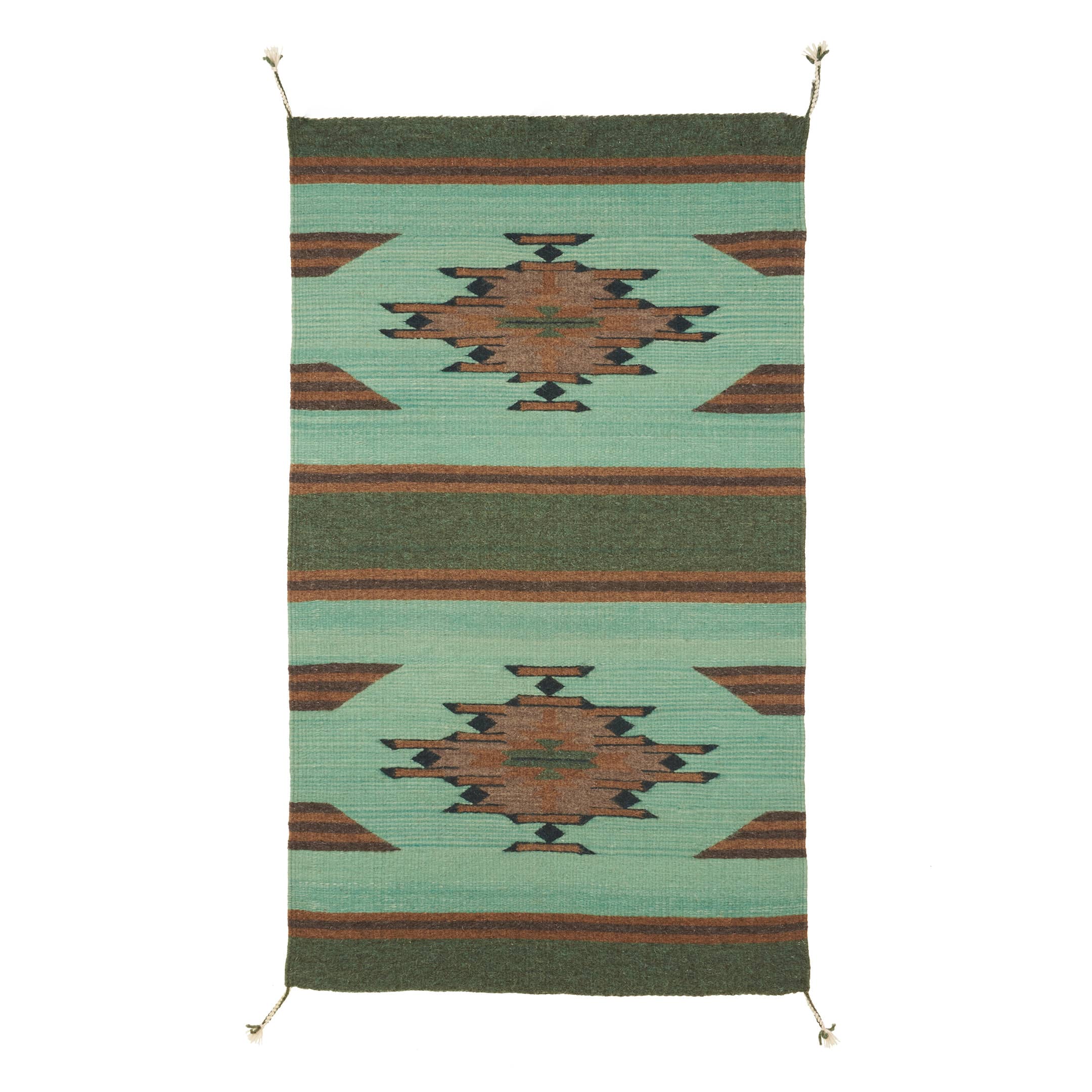
It is this exceptional know-how, this meticulousness and aestheticism that we want to show at HARPO, through our beautiful selection of Zapotec rugs and cushion covers.
At HARPO, you will find Zapotec rugs and Zapotec cushion covers of different sizes and colors in our decoration section. All of them are beautiful examples of the handmade knowledge in natural wool made by the Zapotec Mexican artisans.
Zapotec rugs and pillow cases are a great choice for your interiors
Zapotec rugs and Zapotec cushion covers are great ethnic touches that will magnify your home. Their emblematic Oaxacan style is suitable for all interiors: whether you have a small or large surface, these Mexican weavings will bring a handmade, bohemian and artisanal touch to your armchairs, sofas, or even your bed. Zapotec rugs are available in all sizes and will give a warm and unique atmosphere to your interiors’ decoration. You can discover our online selection of Zapotec's rugs and cushion covers, and get an even bigger choice in our shop.

 Rings
Rings Bracelets
Bracelets Necklaces
Necklaces Earrings
Earrings Pendants
Pendants Buckles
Buckles Belts
Belts Fetishes
Fetishes Bolo ties
Bolo ties Stunning Pieces
Stunning Pieces Moccasins
Moccasins Miscellaneous
Miscellaneous Decorations
Decorations